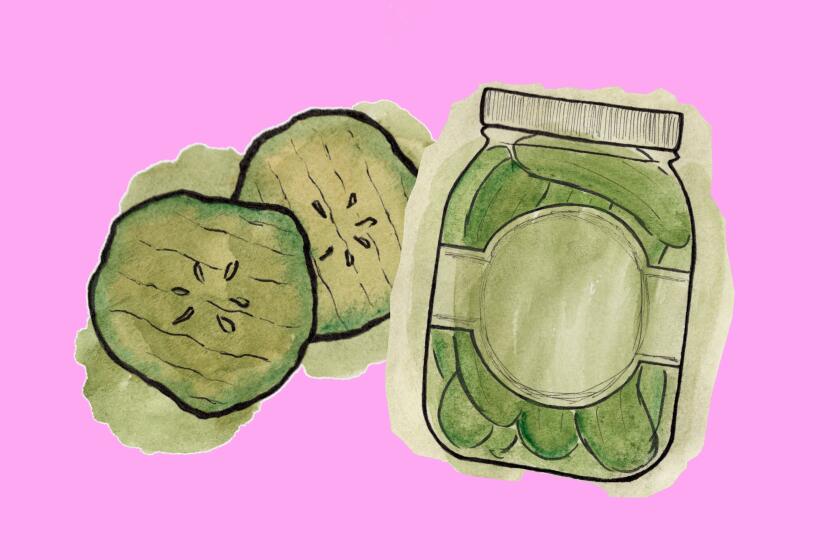Indian pickling Q&A: It’s all about salt, oil and spices
Usha Prabakaran is the author of “Usha’s Pickle Digest,” a compendium of 1,000 heirloom pickle recipes sourced from Indian homes over the course of two decades.
During the quarantine, she’s spent time making pickles from her garden’s citrons and mangoes and from home-delivered lemons, garlic, onions and gooseberries. (She recommends beginners try recipes from her book for mango pickles or lemon pickles.) She’s also working at “breakneck speed” on another encyclopedic compendium — 1,000 recipes for rasam, a tangy South Indian soup or broth.
We asked Prabakaran, who lives in Chennai, India, to share her best tips for those looking to dive into Indian pickles.
What should people who are new to Indian pickling know?
Pickling can feel like a mystery to most, but almost all my recipes can be prepared in the average kitchen.
Indian pickling is all about salt, oil (usually sesame) and spices: the more salt, the safer. Oil standing two inches over the pickle prevents oxidation, and spices, of course, add to the taste. Sometimes, [pickles] can be [brined] in tamarind juice, lemon juice, vinegar, whipped yogurt or sugar syrup.
Prepping can often be harder than pickling itself. It’s important to be methodical: Get clean, dry spoons and jars, use sun-dried (or toasted) and home-ground spices, aim for organic vegetables for better taste and nutrition, salt correctly, and make sure you submerge the pickle in oil or vinegar to prevent mold.
How should I pick out produce?
Buying fruits and vegetables is an art. The best guides are, as always, common sense, based on familiarity with each fruit or vegetable and its special characteristics.
Pickle tips from Porridge + Puffs chef Minh Phan, Birdie G’s chef Jeremy Fox, pickle workshop instructor Jessica Wang and Dr. Arielle Johnson.
What should I know about spices?
Without spices and herbs, a pickle will be a shadow of the fresh vegetable it started out being. Spices and herbs add nuance, flavor and color and give pickles a signature imprint.
It’s easy to make your own spice blend to suit your taste preferences. Start with a basic, multifunctional blend and add as you go to balance. Spices should be dry. Use whole spices when you can, grinding them a couple of days before pickling.
Salt draws out moisture from the vegetable. Sugar balances the salt and tartness. Turmeric adds an earthy richness and has antibacterial properties. Chili and peppercorns add heat. Other spices [used] in hot pickles include mustard seeds, cumin seeds, coriander seeds, fenugreek seeds, asafetida, dried ginger, dried mango powder, ajwain and panch phoron (or five spice) powder.
And don’t forget about spices often used in sweet pickling like cardamom, cinnamon, cloves, nutmeg, bay leaf and kala jeera (onion seeds).How should I eat Indian pickles once I make them?
Pickles are accommodating and versatile, delicious and tasty on their own, with or without accompaniments.
They are usually eaten in South India as an accompaniment to yogurt and rice; rasam and rice with a smidgen of pickle are also unbeatable.
In North India, [they] may be eaten with rotis and all manner of Indian breads, such as chapatis, phulkas, naans or parathas, along with a thick dollop of yogurt. Old-timers mix them with rice and have a first course of spicy rice. Really, they can accompany any dish as they are tastemakers with universal appeal.
More to Read
Eat your way across L.A.
Get our weekly Tasting Notes newsletter for reviews, news and more.
You may occasionally receive promotional content from the Los Angeles Times.












